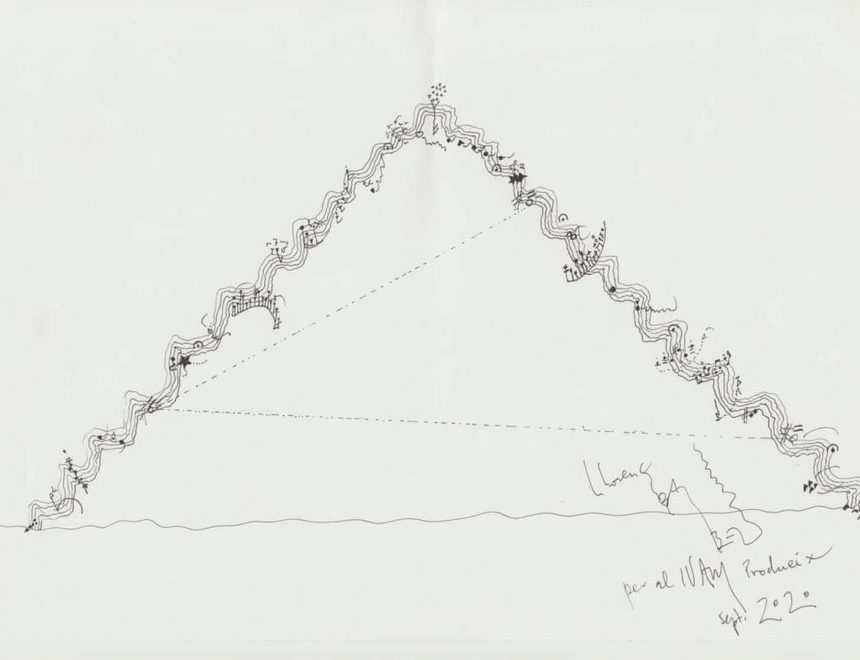Llorenç Barber
(Finally) Deconfined Music
The IVAM is in the transit of becoming an instrument, passage, unexpected music and device for sound art that, among other ‘transits’, arouses our curiosity and attention.
To remedy the situation, and as a musician of inclemency, bells and heights, I went back to Juan García Castillejo, that futurist pioneering priest who, 87 years ago, in 1933, built an electro-composing device able to “produce a pleasant sensation and a new and exquisite taste, a music suggestive of surprise and emotions, mystery and magic, a music of dynamism that discharges sparks, that illuminates the regions of fairies and wizards.”
And, lo and behold, while checking out what’s available in technosonics I discover pressure sensors, in other words, contact devices designed to capture soundwaves and translate them into electrical signals when certain crystalline substances are subjected to some kind of mechanical pressure.
All it takes is for our feet to step on the ground in upwards and downwards movements to unknowingly produce sounds and even interactive music.
Thanks to “electric vitality”, a staircase or a hall is converted into fluttering music that flies and fills with the colour of harmonics an IVAM that looks to the future as a cathedral of spontaneous, unexpected, random and new listenings.
With these decisions and these methods of treating sound as a plastic material that occupies architectures, materials and volumes, we are bringing to life what, in Castillejo’s words is “a new field that has been opened for music for its future development”.
The circuit board was designed and developed by Riley García.
The software was created by the sound artist Arturo Moya.
With the collaboration of Montserrat Palacios, June 2020



